I have already talked a little about the essence of the cult of Ahriman in ancient Persia to expose the lie of Zoroastrianism that it is some Pagan analog of the christian Devil.
Next I want to trace in detail where his cult actually rises and where it ends in inexhaustible antiquity, and how the newest Iranian mythology is connected with religions of more ancient layers of Mesopotamia.
In the picture below, please note the small rod in the form of a double-edged trident at the figure’s chest, as well as the horns. This is how Ahriman was traditionally depicted in the secret Mithraist mysteries. And according to history, the cult of Mithras (Azazel) came to Zoroastrianism from more ancient and original variants of Iranian polytheism. The cult of Mithras dates back to the very dawn of civilization.
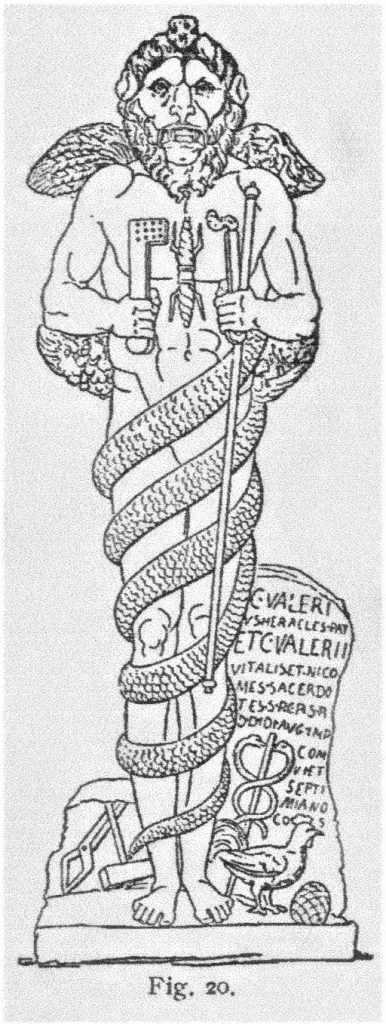
The above illustration of a white marble statue in the Fagan Mithraeum at Ostia Antica, now in the Vatican Library, reproduced in Franz Cumont’s Mysteries of Mithras, 1903, is an amalgamation of the features of serpent, lion and man, this is found in the image of Enkidu in his ancient depictions.
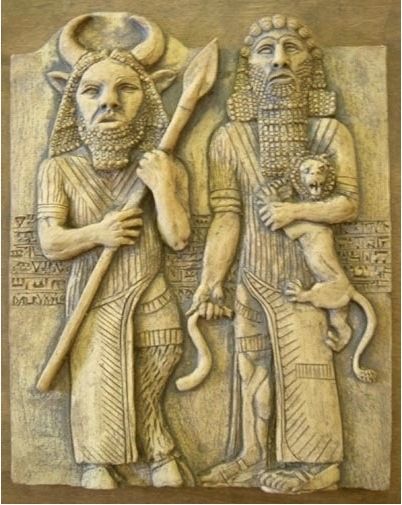
And the bull is also found in the myth of Gilgamesh and here is a picture of it:
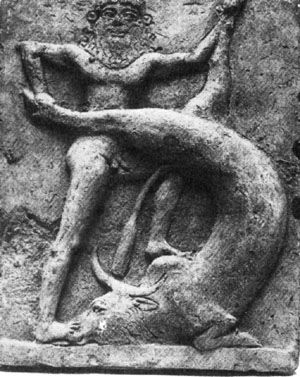
This is the very Mithraist tauroctomy, which you will see next.
And here is this bull in the Mithraist mystery – it is eaten by Ahriman to give birth to the first tree man, the symbol of Ether, the process is led by Mithra:

Joseph-Jacques Odolan-Desnos, Pittorescu Mythology, illustration
“Ahriman and the Tree Man.” [Caption on p. 500: ] Pl. 18 opposite p. 465 depicts the serpent Ahriman strangling the primeval bull [Abudad] from which the first man [Cayomorts] emerges.”
Joseph-Jacques Odolan-Desnos, Mythologie pittorescu, or Universal History of the false Gods of all ancient and modern peoples, Paris, 1839.
Here is a set of animals: the Serpent as a predator, the bull as an object of tauroctony, the God Mithra and the first man.
And further you can observe the same scene in the traditional Tauroctonia of Mithraism of the Hellenes:
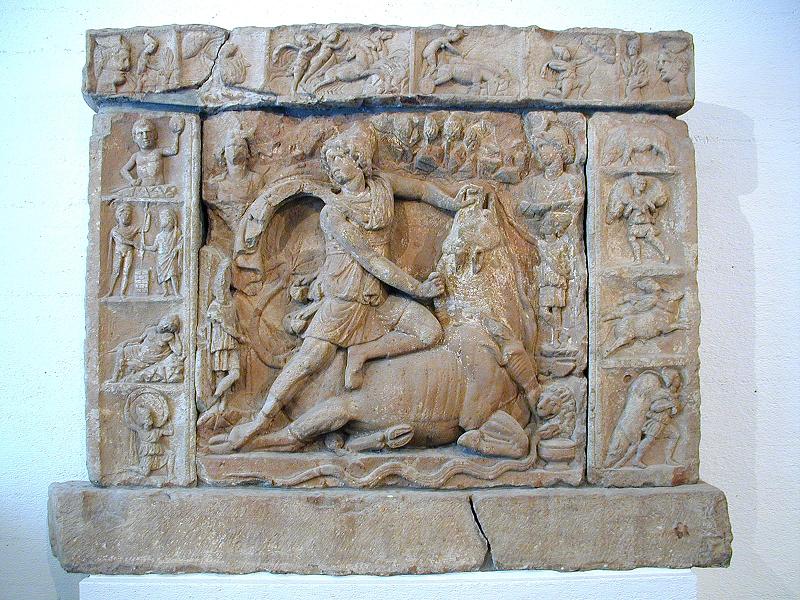
Relief depicting a Tauroctonia, 2nd century AD, Heidelberg
And then this carried over into the later Middle Ages in the form of secret Mithraic orders passing on their hidden messages to each other in the Tarot cards:
https://www.phantastike.com/cart/saturns_game_decoding/pdf/
Another important image is Semurg. Like the Phoenix, he perishes in his own fire and is reborn from the ashes.
He plays the role of a divine Bird, the Mother of all Birds, known among the Slavs, who had many names for birds – Semargl is the word Semurg in Russian, Zhar-Ptitsa and many other birds. They all go back to the Divine Bird of the Sumerians, which was known as Ansu, Anzu, Anzud. Ansu, like Asur or Ahura has the same Indo-Aryan root with the name of the Ansuz rune and the genus of the Gods Asa (As is one of the pronunciations of the Ansuz rune). Note that Semurg has lesser known names by which he is referred to, such as Anki or Homa (Soma is the elixir of the 6th Lunar Chakra in the Vedic system).
Ansu was also the all birds’ Mother or all birds’ Father, the King of all birds. She stole the power of Enlil, Ninurta’s Father, and Ninurta sought to get it back, but having taken possession of it, did not immediately wish to give it back to his father again. We see here our favorite motif of the myth of the Stargazer, the Golden Cockerel and King Dodon, and the reluctance of the latter to give the first the Power of the Serpent [Queen of Shamakhan]. Enlil appears as the Eagle, who must be given the Serpent’s Power to carry it upward. See more about this symbolism here:
Dealing with Astral Entities: The Serpent part 3
It is interesting that in many versions of the myth being defeated by Ninurta and deprived of the tables of destinies stolen by him, Ansu somehow sees that Ninurta does not want to return all the tables of destinies in full to the Father and calls him for this, just like the Golden Cockerel calls, i.e. pecks King Dodon in the forehead for the fact that he not only did not give the Queen of Shemakhan to the Stargazer, but also killed him. Golden Cockerel – none other than the Firebird, Semurg or Phoenix – to them he goes back in its symbolism, it is quite obvious. Hence the Slavic concept of the Bird of Prophecy. This is the part of us that knows everything and can call us for our bad behavior, our higher self.
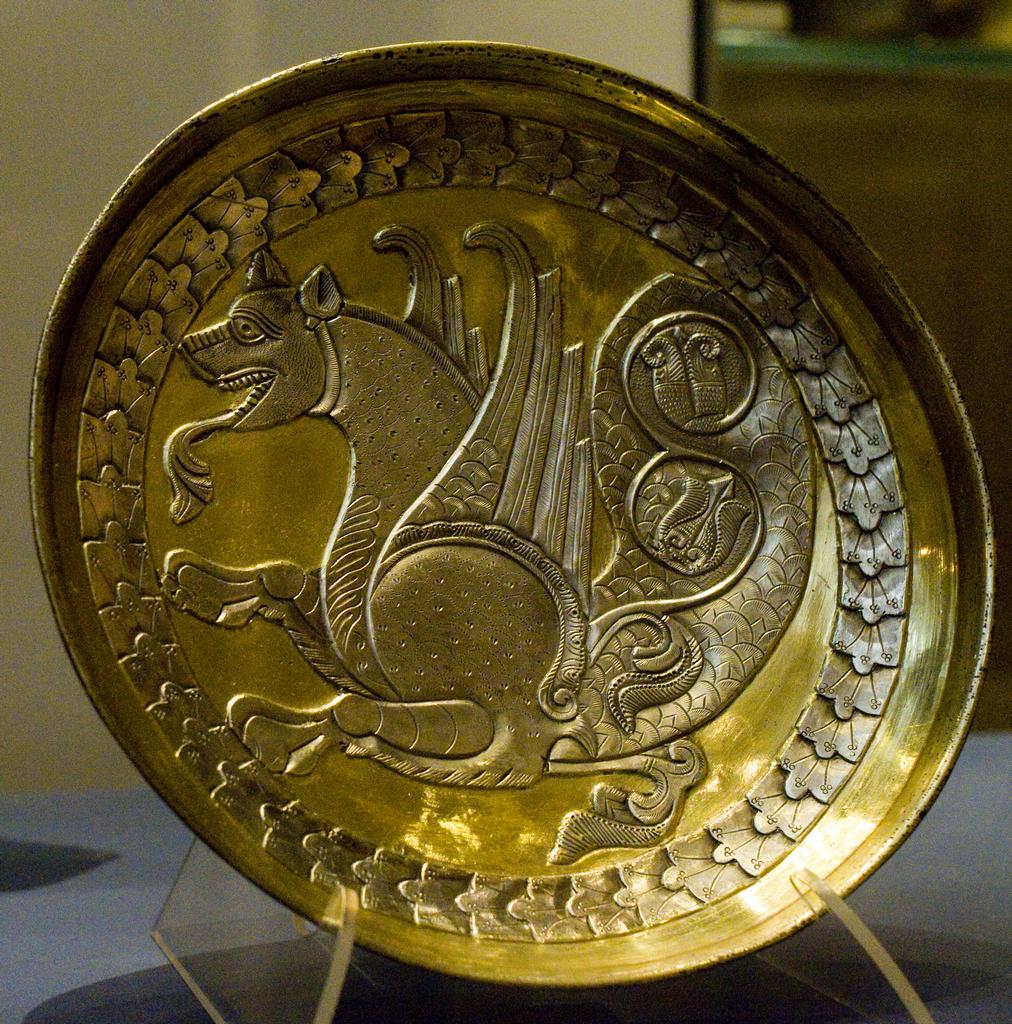
In the Book of Kings, Shahnameh Simurgh acts exactly as higher consciousness. He saves his beloved Zal and gives him his heart desires [Gods’ blessings] saving his wife and son as well, but warns his son Rostam that his karmic path went wrong and to murder Iranian leader would lead to more problems though anyway gives him this opportunity. I am not sure whether the etymology of the Iranian leader’s name can shed light on some secret layers of this epic, which is clearly etymologically connected with the Vedic sources and contains their secret knowledge:
“The Persian word ‘Sepandiār’ is derived from Middle Persian: Spandadāt or ‘Spandyat’ (the variance is due to ambiguities inherent in the Pahlavi script), which in turn derives from Avestan: Spəntōδāta- meaning “Given by Spenta Armaiti” which is later personified as sepandarmaz (سپندارمذ), but in original Avestan meant “creative harmonious thought” [citation needed] (usually referring to the physical laws of nature), but in time had come to mean holy or “Given by (the) holy” (See Amesha Spenta for other meanings of spenta).”
Another interesting point of connection between Ansu and Semurg, I read somewhere a version of the myth, where Ansu does not antagonize Ninurta, but sees him in his nest, as he takes care of the chicks, and accepts him as a friend, doing whatever he wants. And the main myth about Semurg is about his warm relationship with Zal, the hero of Shahnameh, and the Iranian legends that form its basis. Zal was an obvious Pagan sage and a wizard. Zal was once banished by his father, and Semurg raised him in the nest as her own child and repeatedly helped him further. The continuity of the two myths is absolutely obvious.
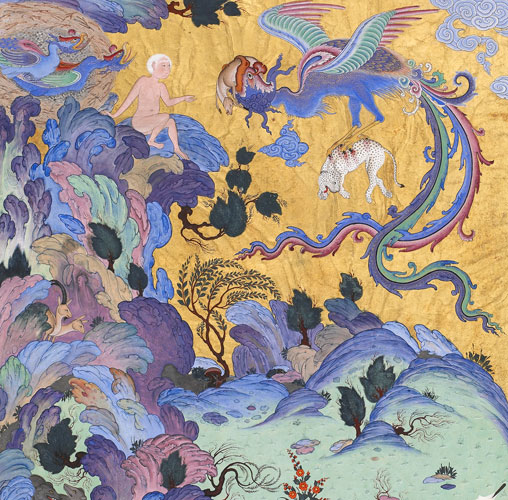
Returning to the images of Tauroctonia and their Persian variants, Enlil controls the Crown Chakra, the Serpent or Ahriman, if he is depicted as a Serpent, is under the Base Chakra, we get the traditional for the whole world ancient confrontation of the mythical Bird and the Serpent, both are sacred animals of the Gods, as a rule it is the Eagle and the Serpent – sacred animals of Baalzebul and Satan respectively, and these Chakras are also controlled by these Gods. You can see the traditional Snake/any other predator, more often a lion, fighting a bull or unicorn everywhere in the Animal Style, and even in medieval engravings, or just a fight between two animals:
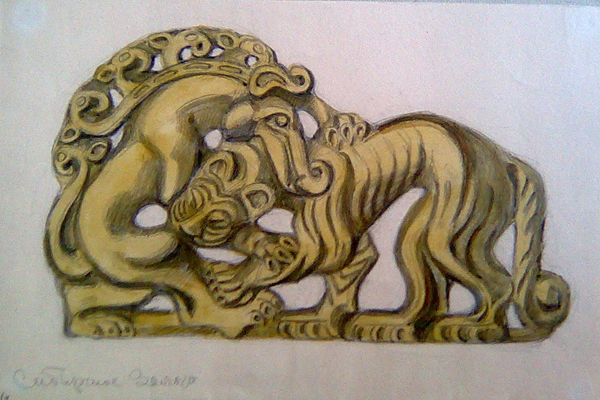 Very often in the Animal Style of the Perm Chud the role of the Lion, Lizard or Serpent is played by a bear. The bird above it eloquently testifies that it is one and the same symbol – the necessity to let the power of the Snake go upwards and release it through the Crown Chakra – the bird always stands above the figure of a predator who gnaws the victim. |

I have serious reasons to believe that the image of Ahura Mazda, at least this aspect, was taken from one of Baalzebul’s aspects, as all later and already completely abrahamic variants of jehovah were stolen from his aspects of Zeus (they practically have one name Jove, Jupiter, pronounced in different manners), though Baalzebul himself, as a person, got in the Bible under the name Baal, while his other, Olympic, Supreme-patriarchal aspect was simply brazenly stolen and perverted for his own selfish needs. The Serpent is present in all the mythologies of the world and is often the son of a Trickster God or Black God, such as Loki. His child was the Serpent Jormungand and the Wolf Fenrir. And Ahriman had a Son-Vlok, who was fought by the family of the first man. His other spawn in legend was the Dragon Dahaka, and only in later myths did he become a man, i.e., a man who “became a Dragon.” Serpent on ancient frescoes often devours someone, for example, another animal, a bull, for example, and this is a sign of devouring all Chakras and all other forces of a man, because in mythology Serpent always seeks to devour more, the whole world: luminaries in the sky, ships, heroes. And some God-hero always defeats the Serpent, but sometimes it is also carried away by a bird, for example, in Kalevala – there the Eagle carries away the Pike of Tuonela, the kingdom of the dead, helping the hero to defeat it (the Serpent and the Fish are interchangeable in ancient fairy tales, especially Slavic).
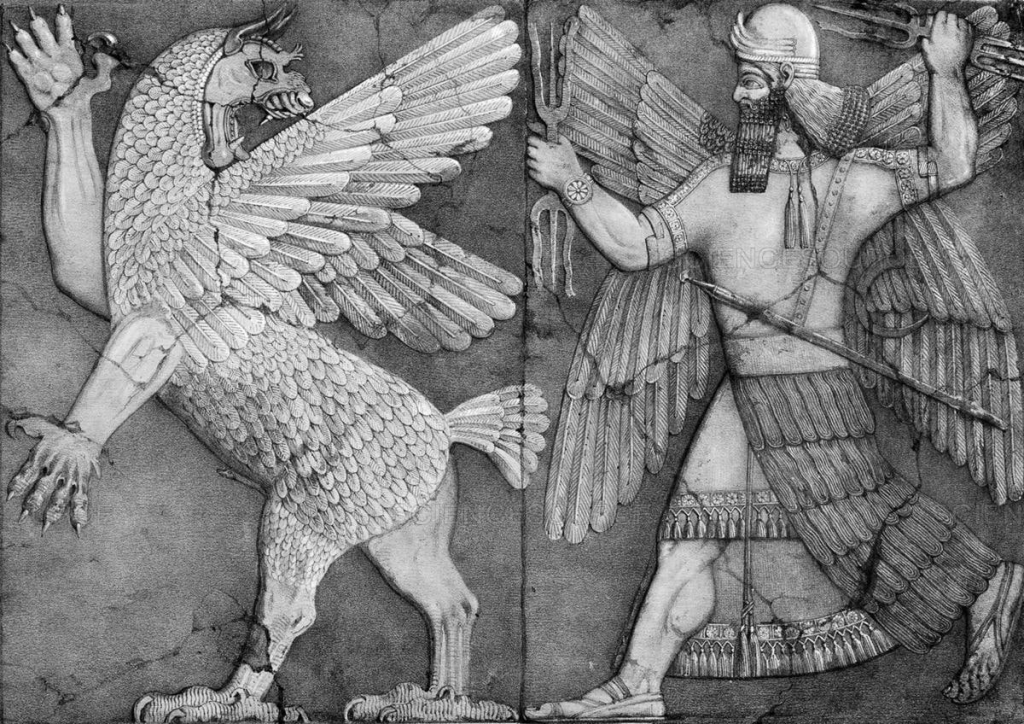
This bas-relief is often interpreted both as the battle of Ninurta and Ansu, and as the battle of Ninurta and the Dragon Asag, whose name is very consonant with some pronunciations of the name of Azhi Dahaku (Armenian Ajdaak, for example).
Note the same staff in the form of a double-edged trident as Ahriman’s in the illustration above. We know from the Temple of Zeus website that tridents are symbols of the Serpent piercing or overcoming blocks in the three nodes of the granthis – the Sacral, Throat, and Crown Chakras, the most difficult to pass through and the most blocked in humanity as a whole. And that with the trident is often depicted Shiva, who is an aspect of Zeus in the Vedas.
As for Asag, it is the dust dragon known as Asakku or Asak / Azag, with a similar name and function, the dragon-conqueror of the world. This is an extremely common image throughout the Orient, and found its most famous realization in the tale of the Golden Cockerel, when the king himself acted as a dragon hungry for absolute power. Actually, Zahhak was also a dragon king. His name is pronounced in Armenian as Ajdaak, in Avestan, Azhi Dahaka or Azhi Dahaku, the beginning with the letter A is present, as well as in the ancient name of the Sumerian dragon Asag. Besides it is a dust Dragon, having connection with dust storms and element of the earth, risen in mountainous terrain that can hint both to element of the Base Chakra, and to ancient underground evil about which Hitler spoke, as about hostile aliens-reptiloids under the earth, that we should be ready for their exit, and such legends also quite a lot. Ajdaak or Azhi Dahaku / Asag or Asaku, Zahhak or Dahaku are very similar words and very similar myths. They can also go back to the image of man’s own evil in wanting to abuse the Serpent of Satan. And they are all absolutely related to the other predatory animals mentioned in connection with the Animal Style.
According to the myth, Ninurta pierces the liver of the dragon Asag. And the liver is taken out of the defeated Diva by the hero Rostam from the Iranian epic Shahnameh, who basically travels through the kingdom of Divas to fight them and defeat them (the word Diva is often associated with the word Serpent in Slavic and Iranian tales, in the Urals there are tales about whole tribes of Divas, as well as here), supposedly this liver has healing properties. The blood or body parts of a defeated Dragon often have healing and miraculous properties in the legends of many peoples. The victor of the Serpent receives benefits in the form of such healing items – the one who has managed the power of the Serpent receives benefits in the field of healing and other superpowers.
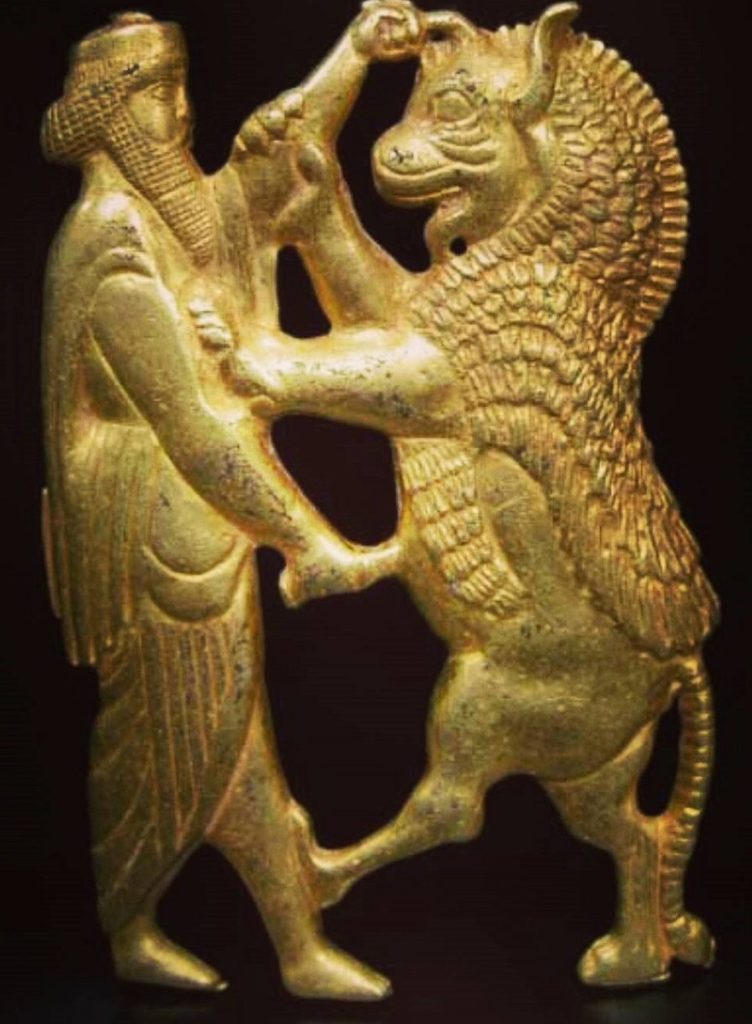
The kinship of these myths is emphasized by the staff / mace with a cow’s head at Faridun and the magic staff / mace with the Demon Sharur planted there. In some versions of the myth, Shushmar is a net that extends across the universe, having been cast, and it was the net that reached Enlil’s throne for advice for Ninurta. The staff is the spine, and from it the biblical Aaron stole his staff. The head of the cow is not accidental – this magic cow nurtured and saved little Faridun when Zahhak ordered the guards to destroy all the babies in the city, and by the way, from there and from legends like this, the jews stole their biblical myth of the beating of babies. And now it has degenerated into a myth about themselves, i.e. jewish religious practices include sacrificing Gentile, i.e. non-jewish babies, to jehovah. The tale of Faridun and Zahhak in its modern form is a warning of a jewish invasion of the earth as a result of the decay and misuse of the Serpent’s powers. And the image of the Viceroy, who usurped power and does not want to give it back, and usurped it from Yama, the God of the Underworld, or in Iranian, Jamshid – an immortal man who lost immortality (khvarno) and went into death / mortality because of the violation of Divine laws (removal of spiritual practices and modification of the ancient Iranian religion).
The image of the cow is characteristic of the entire Ancient Indo-Iranian world. Winged bulls are a very famous symbol associated with Babylon the Great. You can see their statues on all the temples. These creatures were called Lamassu and their statues were in all homes as Protectors and Guardians. Sometimes they have hooves on them, sometimes bird feet. Bird feet recall Ansu and unite traditional depictions of Lilith and many mythical creatures of Babylon and Iran, duck feet are also attributed to witches and elves in the West. These bulls shared with Lilith, Ahriman and the Devas their “descent into Hell” in late Babylon and Persia: one of the Ashurbanipals is known to have destroyed these monuments and declared these Spirit Protectors to be spirits of evil. This was during the modification of the Iranian religion long before the appearance of islam in these parts, but this tradition was further continued by some Xerxes and modern islam terrorists who destroy ancient monuments.
Staffs or maces with animal heads or not (animal heads are often found in various shamanic cultures) also reflect the Tarot Wands, which go back to the archetype of the “hero armed with knowledge” or magician. Ancient Iranian religion was called the religion of the Magi, which clearly indicated respect for knowledge as the only way not to fall victim to one’s own evil and corruption.
And further, we see by the practical identity of customs, that the whole islam has been stolen from Zoroastrianism. Allah was stolen from the Zoroastrian god, known among different peoples as Yezdan, Ahura Mazda, Ormuzd or Ormusta Tengri. From Ahriman they stole Iblis, in particular, in the Shahnameh Ahriman is sometimes so called Iblis. From the Divas, they stole the Jinn. And from the concept of pure unquenchable divine flame, from which Ahura Mazda, as the supreme god, allegedly consists, they stole the fire, from which Jinn and Iblis allegedly consist. This detail was forgotten or could not be changed, or perhaps they wanted to blaspheme it too, because it is a Pagan spiritual allegory, so they left it on the side of Iblis. The essence is that what in Zoroastrianism the supreme deities consisted of was left here for Iblis and his Jinns, i.e. Divas, which leads logically to the following. Divas, which leads logically not only to the concept of the supreme deities of Zoroastrianism, but also leads the Zoroastrian Divas and Ahriman themselves back to their original Vedic pedestals of the true original and supreme Gods, and exposes the secret connection of the brothers Ahriman and Mazda and the fact that both with all their subjects were the original Gods.
